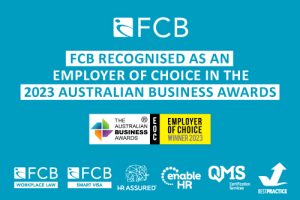Employer of record vs actual employer – how to tell the difference
October 13, 2020By Nicole Visedo, Senior Workplace Relations Consultant
When a corporate group of companies becomes insolvent, the appointed liquidator has to identify the correct entity within the group that is the employer. Which entity is the actual employer can have a major impact on an employee’s chances of recovering unpaid employee entitlements when their employer has failed to pay these entitlements due to insolvency.
Some corporate groups have structured their business to have one company in the group that is, on paper, the employer. But a recent case shows that, under the law, if your corporate group goes bust, the entity you have down as the ‘employer of record’, and the entity actually employing your workers, may not be the same!
The Case
In Branded Media Holdings Pty Limited (in liq) [2020] NSWSC 557 (“Branded Media”), Liquidators sought directions on the true employer following the external administration of Brand New Media Pty Ltd (“BNM”) and its subsidiary Branded Media Holdings Pty Ltd (“Holdings”). The subsidiary, Holdings, was placed into liquidation and BNM was subject to a deed of company arrangement.
‘On paper’, Holdings was named as the employer in employment offers and agreements. The Holdings company was established as the employing entity for employees that provided services to other companies within the group.
Fortunately for liquidators in the Branded Media case, some previous cases had already set guidelines to help determine the true employer.
The precedents
In Gothard v Davey [2010] FCA 1163, the court had established several matters that assisted in determining the correct employing entity in the Branded Media case. Gothard v Davey looked at which entity:
- Had practical and legal control and direction of the employees;
- Made decisions about hiring, disciplinary issues and remuneration;
- Actually paid remuneration;
- Communicated with employees in respect of leave; and
- Made decisions about the termination of employment.
Despite being the named employer, Holdings did not carry out these activities or hold any control or interest in decisions relating to these matters.
In a second case, Re C&T Grinter Transport Services Pty Ltd (in liq) [2004] FCA 1148, Justice Finn summarised that there are “several considerations that were relevant to identifying which of two or more possible entities was the employing company” and “the totality of the circumstances surrounding the relations of the various parties, including conduct subsequent to the creation of an alleged employment relationship, is relevant to the assessment”, and “documentation created by one or more of the parties describing or evidencing an apparent employment relationship will be relevant to, but not necessarily determinative of, the true character of that relationship”.
In the Branded Media case, the subsidiary, Holdings, listed ‘on paper’ as the employer, had no assets or income from which it could pay employee entitlements and did not receive any payment from its parent company, BNM, for its services. BNM, on the other hand, received the benefit of services provided by the employees, paid the employee salaries and entitlements, conducted business and generated revenue from which it could meet its obligations to employees, charged other entities for employee services provided, and generally made decisions regarding the employment and termination of employees. Employees also acted as representatives of BNM, including on business cards and branded email signatures.
It comes down to the “practical reality”
It was held, in the Branded Media matter, that BNM was the actual employing entity given the substance and reality of the relationship between BNM and the employees. The absence of an “intelligible business objective” for the arrangement between Holdings and BNM – for example an on-charge for services to BNM (and other entities) or a bank account or accounting structure that enabled the company to meet its obligations as an employer – meant that Holdings was incapable of meeting its obligations as an employer.
So, if you’re operating as a group of companies, remember that it’s the “practical reality of the relationship [that] will determine which of two possible entities is the employer”[1] and not merely the company you’ve listed as the ‘employer of record’.
If you operate as a group of companies and would like a professional assessment of your organisation to determine which is the proper employing entity in such matters, contact FCB Group on 02 9922 5188.
Nicole Visedo is the Senior Workplace Relations Consultant at FCB Group. She has over 18 years of HR experience and has developed a deep understanding of this HR business functions.
[1] Golden Plains Fodder Australia Pty Ltd v Millard [2007] SASC 391; (2007) 99 SASR 461 (“Golden Plains”) at [33]


























